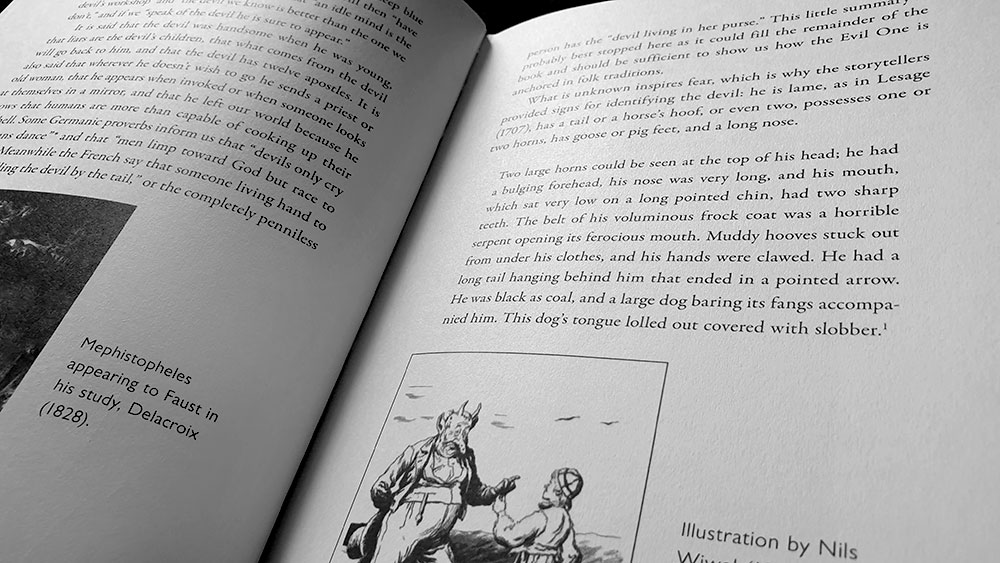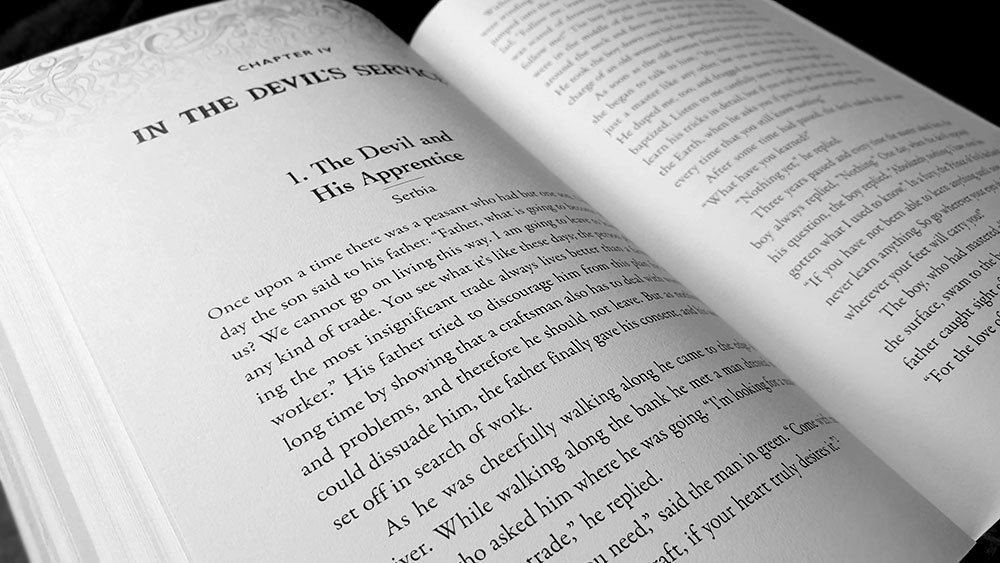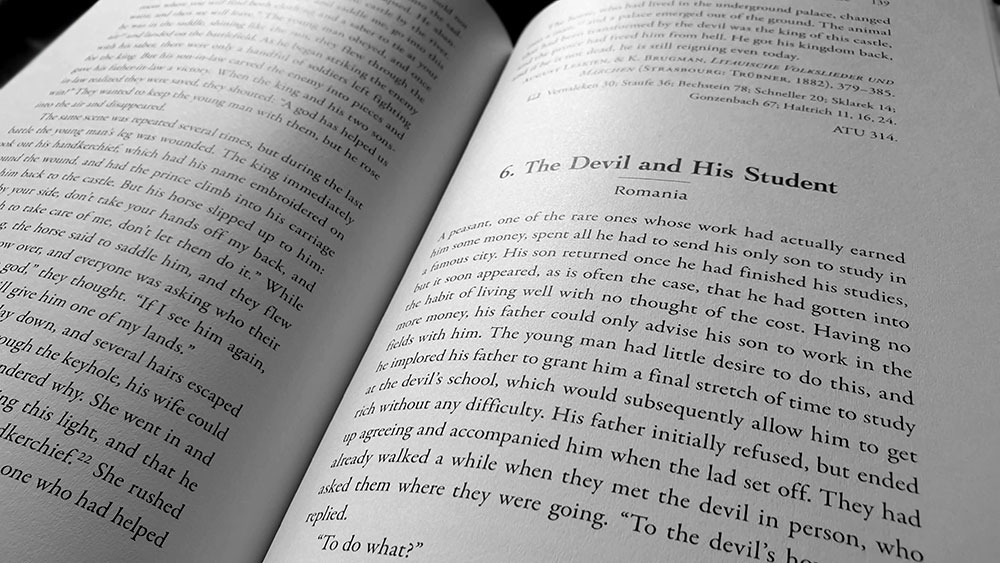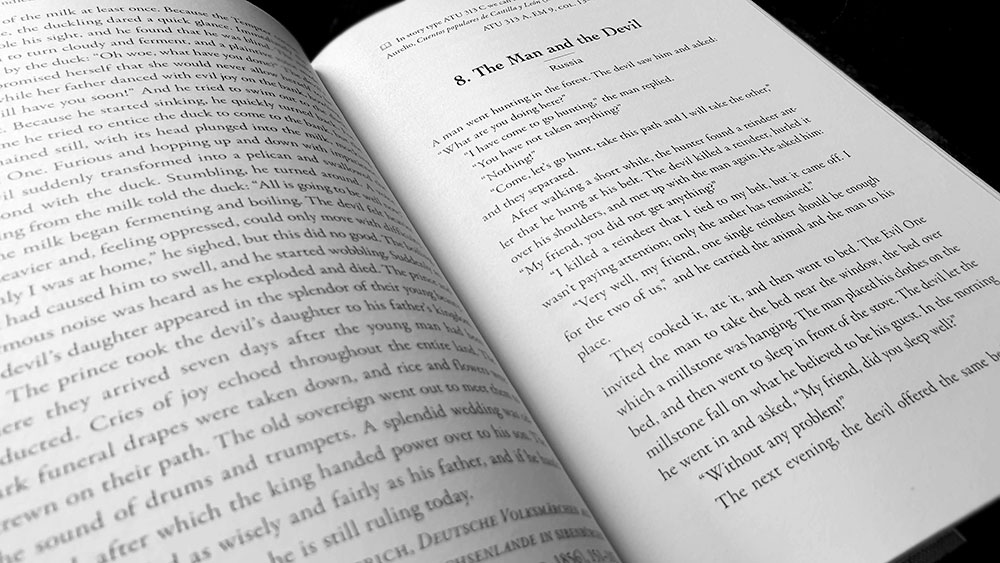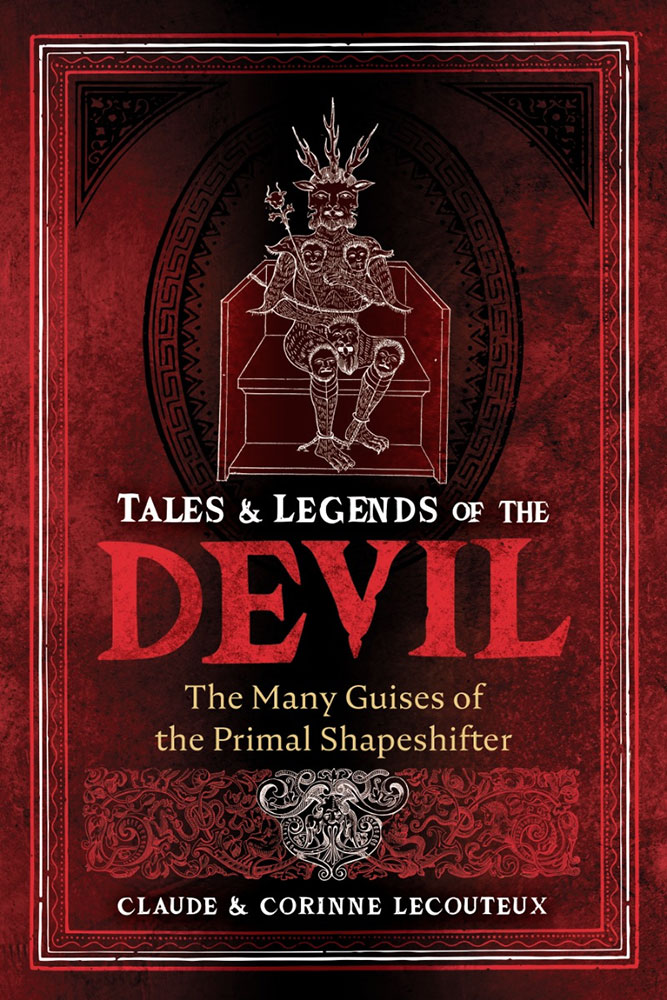 Subtitled The Many Guises of the Primal Shapeshifter, this is an English edition of Contes et légendes du diablele, first published in French, sans the subtitle, in 2021 by Éditions Imago. As with two previously reviewed titles from Claude and Corinne Lecouteux, Mysteries of the Werewolf and Tales of Witchcraft and Wonder, Inner Traditions have put a bit of extra effort into the presentation, with a red cloth-bound hardback wrapped in a fetching dustjacket.
Subtitled The Many Guises of the Primal Shapeshifter, this is an English edition of Contes et légendes du diablele, first published in French, sans the subtitle, in 2021 by Éditions Imago. As with two previously reviewed titles from Claude and Corinne Lecouteux, Mysteries of the Werewolf and Tales of Witchcraft and Wonder, Inner Traditions have put a bit of extra effort into the presentation, with a red cloth-bound hardback wrapped in a fetching dustjacket.
Les Lecouteux draw on folk traditions from all over Europe, some twenty countries including Transylvanian Romania, Bulgaria, Albania, Switzerland, Italy, France, Scandinavia, Moravia, Bohemia, Lapland, and the Baltic countries. These tales are grouped together into seven categorical chapters considering the Devil as a suitor, the family of the Devil, tricking or outsmarting the Devil, the relationship between the Devil and the Church, visits to Hell, and finally, singular tales that eschew these broad classifications. Although there is a substantial bibliography at the rear of this book, the front matter includes a list of credited source that is rather humble, running to only nine works, though some of these are quite substantial, such as Walter Scherf’s 1600 page Das Märchen Lexikon, as well as the folklorist’s essential double-feature bill of Antti Aarne’s The Types of the Folktale. A Classification and Bibliography, and Stith Thompson’s seminal six-volume Motif-Index of Folk-Literature.
Following a foreword by translator Jon E. Graham, the authors give a brief introduction, introducing the folk concept of the Devil and providing a quick summary of how he appears within the tales they have collated. Leaning heavily on Aarne and Thompson’s pioneering work in folklore, each entry includes endnotes that indicate a particular folk motif when it appears in the story. These are enhanced at the end of the book with two appendices, one which lists the included tale types based on Aarne and Thompson’s international classification system, and an index of motifs associated with the devil based on Thompson’s Motif-Index of Folk Literature.
The type of stories included here will be familiar to anyone with even a passing knowledge of the tropes of folklore, with the Devil appearing as an often whimsical, sometimes inept, buffoonish figure, a stark divergence from his grimdark ecclesiastical role. He gets tricked by knaves and deserters, is shot in the face by his son after mistaking a rifle for a flute, and is trapped inside a walnut. Not quite the primal shapeshifter of the subtitle, more like the primal doofus, but that probably wouldn’t look so good on the cover.
In the Scriptus Recensera review of Mysteries of the Werewolf it was noted that the entries in that book lacked references and footnotes, while later, we were happy to find, in a significant improvement, that Tales of Witchcraft and Wonder refreshingly had both. But Tales & Legends of the Devil takes a step backwards, and although the references are there at the end of every tale, only a tiny handful of them have any notes or analysis. There’s also no introduction or summary at the beginning or end of each chapter, meaning that you are just given the stories themselves and that’s about it. This wouldn’t be such a problem if it weren’t for how the book is presented as if it offers something more. This begins with the subtitle The Many Guises of the Primal Shapeshifter, which suggests some sort of editorial direction in which the idea of the Devil as a “Primal Shapeshifter” will be unpacked through canny exegesis by Les Lecouteux. This is then affirmed by a reviewer’s blurb on the back cover, hyperbolically talking of Les Lecouteux ‘unearthing’ “a truth that our culture translates into myth: we as a human community remain deeply affectionate to our old gods.” and of having created “a forbidden feast.” But nah, they didn’t do that, they just republished some old folktales.
Promotional copy from Inner Traditions also leans into this perception, crediting an agency that, save for the introduction, just isn’t in the book, with talk of the authors explaining this, or peeling back the Christian veneer here, and even tracing the devil’s shapeshifting powers back to their Vedic origins in ancient India. Um, what? That weird, aberrant little claim is a marketer’s injudicious extrapolation of a strange start to a discussion of the Devil as shapeshifter in which Les Lecouteux make the eyebrow-raising declaration that the Vedic names for the devil are kamarupa or vicvarupa, and saying that these names mean “he who changes shape at will.” This may be indicative of some loss in translation, if we’re generous, because that’s quite the claim to make and there is no further explanation as to how the Devil would even have a name in Bronze Age India, As it is, K?mar?pa is simply the name of an early semi-mythical state from India’s Classical period (with an etymology, developed six centuries later, explaining it as the place where the god of love K?madeva regained his rupa or form). Similarly, Vicvarupa is presumably Vi?var?pa, the name of a theophany of Vishnu which is also used as an epithet for Soma and Rudra, amongst others deva, and as a name of Tvastr who is, at least, classified as an asura. But I digress.
The value, then, of Tales & Legends of the Devil is more humble than the marketing might have us believe, and yet, perhaps more worthy. For it is found in its concatenation of tales, making it a handing resource for getting an exclusively diabolical, albeit often comical, slice of the far larger pie that is folktales and legends.
As is tradition, Inner Tradition have turned to Debbie Glogover for the text and design layout here, with the body of Tales & Legends of the Devil set in Garamond, paired with Nocturne Serif and Gill Sans as display faces, and with the battered serif of Zamora taking the lead for chapter headings and as the cover star. The title text, along with the cover hero image (using the image of The Trinity of Absolute Evil based on a miniature from the 15th century Histoire du Saint-Graal), are both spot varnished on the ruddy dust jacket for that extra bit of class.
Published by Inner Traditions
